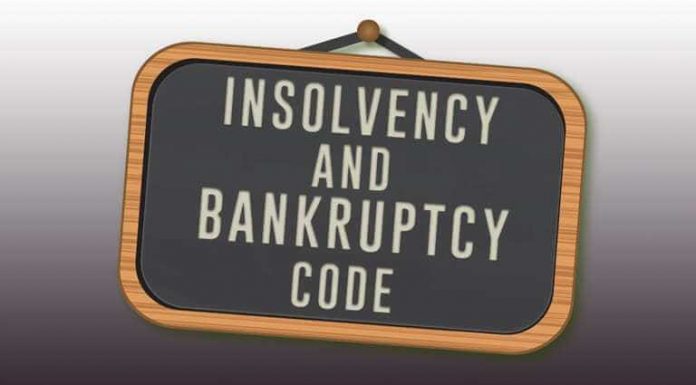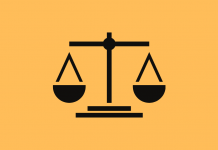This article is written by Anurag Singh from ILS Law College, Pune. This is a comprehensive article on the process of the institution under the IBC.
Table of Contents
Introduction
The Insolvency and Bankruptcy Code, 2016 (hereinafter referred to as the ‘Code’) is a revolutionary step as it provides comprehensive and time-bound solutions. Moreover, for the operation of businesses in India, it provides an ‘exit strategy’. Furthermore, this piece of legislation paves a roadmap for focussing on creditor-driven insolvency resolution. To understand how revolutionary this Code is, let’s take a look at the ease of doing business report created by the World Bank in 2014. Out of the 190 countries, India was at 142nd place. As of 2020, it is at 63rd place, and that is a drastic jump in just six years. The major contributor to the success of the Code was the effective and fastrack functioning of the institutions under the Code.
The objective of the Insolvency and Bankruptcy Code, 2016
Before the commencement of this Code, it took 4.3 years on average for the insolvency process to completely resolve in India. This number was very high compared to other developed countries of the world. Moreover, due to this delay, the value of the assets owned by the company depreciates and the banks were very reluctant to invest in businesses as they were not able to make a good recovery. Therefore, the main aim of the Code was to curb this problem of delay in the insolvency and bankruptcy framework.
Institutions and their functions under the Code
As has been discussed earlier, the institution under the Code is the main pillar of the Code as well as the regulatory mechanism in the country. Moreover, this setup comprises 5 main institutions to facilitate the Corporate Insolvency Resolution Process (CIRP). They are as follows:
Insolvency and Bankruptcy Board of India (IBBI)
The Insolvency and Bankruptcy Board of India (IBBI), established on 1st October 2016, is a regulatory body that oversees the process related to bankruptcy and insolvency. It will not be out of place to state here that the IBBI performs legislative, executive, and quasi-judicial functions concerning insolvency professionals, insolvency professional agencies, and information utilities.
It was mainly established to counter the bad loans reported by the creditors, especially banks. Moreover, it has the power to enact the laws and amend them to suit the current needs of the Indian market. For example, IBBI recently introduced a Pre-packaged Insolvency Resolution Process for micro, small, and medium enterprises (MSMEs). Furthermore, Section 196 of the Code clearly states all the powers and functions of IBB; a few important ones are herein stated below:
- Registration of insolvency professional agencies and monitor their activities.
- IBBI creates information utilities and renews them according to the needs.
- IBBI makes sure that the insolvency is resolved as quickly as possible and the creditors make a maximum recovery.
- Carries out a regular audit on debtor’s assets and creditor’s claims.
Insolvency professional agencies
Insolvency professional agencies are the agencies that are registered with IBBI under Section 201 of the Code. In case of complaints under Section 217 of the Code, IBBI holds these agencies and their professionals accountable as it exercises power over them.
The insolvency professional agencies have been established to conduct exams and enrol insolvency professionals. Moreover, all insolvency professionals should be compulsorily registered with insolvency professional agencies. Therefore, they are the pieces of machinery developed under the Code to regulate and enrol the insolvency professionals. Section 204 of the Code states the functions of the agency. They are as follows:
- Granting membership and monitoring the performance of the insolvency professionals. Moreover, make sure that they abide by the conduct and ethics laid down by the agency.
- Publish information about its function, list of members, and their performance. In case the insolvency professional does not follow the guidelines laid down, they also have the right to suspend or cancel their membership.
- Safeguard the rights, privileges, interests and redress the grievances of its members.
Insolvency professional
Insolvency professionals are licensed professionals who deal with the matters of insolvency under the Code. Moreover, they are involved in the process of dissolving the debtor’s assets, managing the debtor’s assets, and providing relevant information to the creditors to help them in the decision-making. Interestingly once a company, individual, or ‘limited liability partnership’ (LLP) is declared insolvent, authorized professionals act on behalf of them.
Regulations 4 and 5 of IBBI lays down the eligibility, qualification, and experience required to become an insolvency professional under the Code.
The foremost function of the insolvency professional is to drag the financial debtor out of insolvency to achieve the same. Following are the key tasks performed by the insolvency professional:
- Obtaining valuation of the entity
- Periodic reporting to the Committee of Creditors (COC)
- Preparation of information memorandum
- Preparation of resolution plan
- Obtaining consent for the resolution plan from the Committee of Creditors (COC)
In case the COC does not approve of the resolution plan, then the insolvency professional has a vital role in liquidating the entity and other settlement processes.
Adjudicating authority
The Code has established the adjudicating authority for the Corporate Insolvency Resolution Process (CIRP) for the body corporate, individuals, and LLPs. Most importantly, all the appeals don’t lie with the same authority. There are two adjudicating authorities established under the code. They are as follows:
- National Company Law Tribunal (NCLT) for corporate debtors
- Debt Recovery Tribunal (DRT) for individuals and partnership firm
The appeals against the orders of NCLT lie with the National Company Appellate Law Tribunal (NCALT) and thereafter with the Supreme Court. Similarly, the appeals against the orders of DRT lie with the Debt Recovery Appellate Tribunal (DRAT) and thereafter with the Supreme Court.
Before the establishment of these adjudicating bodies, all the appeals were filed under the Civil Court. However, after the commencement of the Code, it aimed to create one chain of authority for adjudication therefore Civil courts were prohibited to intervene in the matters of insolvency and Bankruptcy.
Information utility
Under Section 210 of the Code, an information utility is a registered professional organization to accumulate, validate and circulate the financial information of the debtor to the financial creditors for the code to function in a time-bound manner. The main aim of this organization is to remove the roadblock of information to initiate insolvency resolution.
Most Importantly, it was established because the financial creditors and the operational creditors weren’t able to prove the insolvencies. The required financial information couldn’t be accessed. However, what the information utility has done is bridge that gap, and with the access of information with the creditors and the insolvency professionals, now they can take a call on the debtors, whether to liquidate the company or resolve the insolvency.
There are various types of information under information utilities. They are herein laid down below:
- Records of the liable insolvent entity.
- Records of collateral assets that were pledged against the credit given to the entity.
- Records that have accumulated data of balance sheets and cash flow of the entity.
- Records of evidence regarding the default on the part of the debtor.
The Code also ensures the credibility and reliability of this data.
Corporate Insolvency Resolution Process (CIRP)
The process of insolvency is triggered when there is an occurrence of default by the debtor. Moreover, the minimum amount of default, when the financial and operational creditor approaches the NCLT is 1 crore rupees. However, the application for initiation of corporate insolvency resolution can be made by the financial creditor, operational creditor, and corporate debtor itself.
The corporate debtor along with the application should submit the evidence from the information utility to support the default. Moreover, the financial creditors should also give the name of the interim resolution professional with the application. The application is accepted or rejected in fourteen days. Subsequently, if it is accepted then the CIRP should be initiated, and if rejected then the applicant should be given seven days to rectify the mistake.
After the commencement of the CIRP, a period of 180 days is given during which all the legal proceedings stand suspended and the entity is given time to resolve its status of insolvency. This period of 180 days is called the moratorium period.
Section 14 of the Act prohibits certain activities which are as follows:
- Transferring or disposing of any assets by the corporate debtor.
- Recovery from any property owned by the corporate debtor.
Thereafter the adjudicating authority shall appoint the interim resolution professional (IRP) within fourteen days of commencement of the CIRP. Section 16 of the Code states that the IPR shouldn’t have any disciplinary action pending against them. If so, the adjudicating authority can appoint a different IRP to what was requested from the creditors.
Key roles performed by the IRP:
- Issuance of public notice of the CIRP.
- Formation of the committee of creditors.
- Conduct the first meeting of the committee of creditors.
- Managing the affairs of the corporate debtor on behalf of the board of directors and partners.
- Accumulate all the claims against the corporate debtor.
However, the IRP is appointed for only thirty days, and thereafter a resolution professional (RP) is appointed by a majority vote (66%) from the creditors. They decide in the first meeting whether to appoint the interim resolution professional as the resolution professional or appoint a new resolution professional.
Key responsibilities of the resolution professional:
- Preparation of information Memorandum.
- Obtaining the valuation of the entity.
- Preparation of resolution plan.
- Obtaining the consent of COC for the resolution plan.
Within the moratorium period If the COC sees the scope of improvement in the corporate debtor, then by the mode of majority vote (66%), the COC can vote in favour of moving forward with the plan and drag the corporate debtor out of insolvency. However, if they feel otherwise, then all the assets of the corporate debtor will be liquidated under Section 33 of the Code.
Current situation of the institutions under IBC
The efficiency of the IBC Code depends upon the resolution process. Moreover, the resolution process should be completed within the stipulated time. Furthermore, a case should be resolved within 180 days under the Code and an extension of ninety days can be requested in some cases. Therefore, it will be safe to say that the maximum number of days that a case should take is 270 days. However, as of December 2020, 1418 out of 1717 pending cases had extended beyond 270 days.
Rachit Sharma, general manager of Taxmann had said that “as of February 2021, NCLT had just 41 members: 20 judicial and 21 technical. With this strength, the NCLT has to deal with matters arising both under the Companies Act, 2013 and IBC”. Adding to the aforementioned point, there is a huge shortage of human resources under the Code. With this kind of strength in the system, the NCLT has to deal with 19,844 cases, which seems practically impossible.
The new prepackaged insolvency resolution process formulated by the IBBI for the MSMEs is further burdening the NCLT even more. Here is where the government should step in and focus more on improving the machinery and increasing the human resources so that the Code does not lose its essence of being time-bound.
Therefore, it will not be out of place to state here that currently, the NCLT is at its least effective stage as the business was hit by the pandemic. Thereafter, to avoid a collapse in the economy, the government shut the insolvency proceeding for a year. Due to this, the creditors have suffered a lot, as they were not able to initiate the insolvency resolution process and the value of assets with the debtors are depicting with each passing day furthermore, this would affect the amount of recovery by the banks. Therefore, insolvency 2.0 should focus equally on creditors and the debtor.
Conclusion
Insolvency and Bankruptcy Code, 2016 is a very revolutionary code that seeks to provide time-bound and one-stop solutions for all the insolvencies under the Code. Moreover, the institution and machinery established under the Code help to achieve the goal to resolve the corporate insolvency or liquidate if need be. However, in recent times, the Code has had too many problems which are hindering the growth as well as reducing the efficiency of the Code. With the reduction in efficiency, the purpose of the Code has been questioned. But since the country is going through tough times in the form of COVID-19, insolvency 2.0 can be seen with a ray of hope for change.
References
- https://www.taxmann.com/post/blog/372/insolvency-professional-agency-meaning-registration-functions/
LawSikho has created a telegram group for exchanging legal knowledge, referrals, and various opportunities. You can click on this link and join:











